Meteora

The Metéora is one of the largest and most important complexes of Eastern Orthodox monasteries in Greece, second only to Mount Athos. The six monasteries are built on natural sandstone rock pillars, at the northwestern edge of the Plain of Thessaly near the Pineios river and Pindus Mountains, in central Greece. The nearest town is Kalambaka. The Metéora is included on the UNESCO World Heritage List under criteria I, II, IV, V and VII.
Reaching this globally exceptional destination will be easy for you. Just contact us and book one of our cars to drive there in comfort and safety, starting right from the airport of Thessaloniki. Should you feel unsure about which way to go, ask for a GPS device to be installed in the car for a small additional fee.
History of Meteora
In the 9th century, an ascetic group of hermit monks moved up to the ancient pinnacles. They were the first people to inhabit Metéora. They lived in hollows and fissures in the rock towers, some of which reach 1800 ft (550m) above the plain. This great height, combined with the sheerness of the cliff walls, kept away all but the most determined visitors. Initially the hermits led a life of solitude, meeting only on Sundays and special days to worship and pray in a chapel built at the foot of a rock known as Dhoupiani. As early as the 11th century AD hermit monks were believed to be living among the caves and cutouts in the rocks.

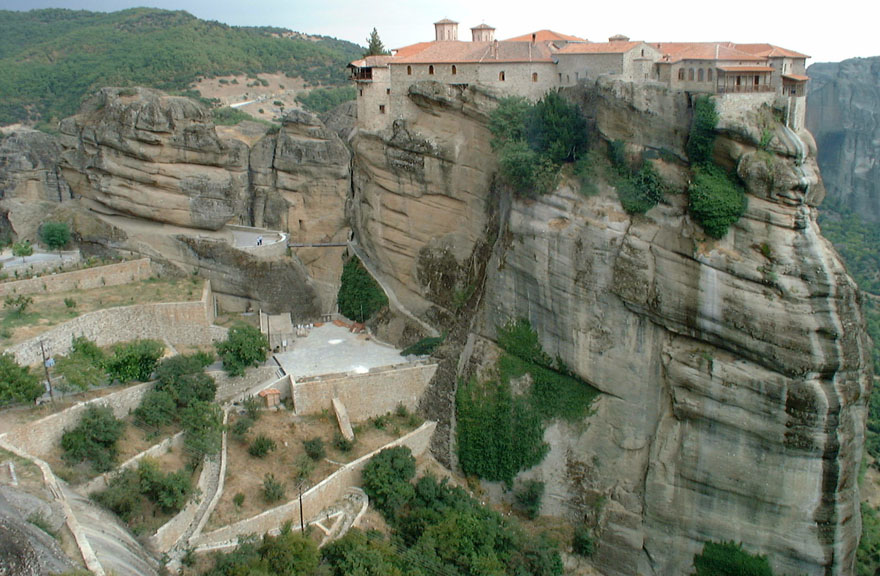
The exact date of the establishment of the monasteries is unknown. By the late 11th and early 12th century, a rudimentary monastic state had formed called the Skete of Stagoi and was centered around the still-standing church of Theotokos (mother of God). By the end of the 12th century, an ascetic community had flocked to Metéora. In 1344, Athanasios Koinovitis from Mount Athos brought a group of followers to Metéora. From 1356 to 1372, he founded the great Meteoron monastery on Broad Rock, which were perfect for the monks; they were safe from political upheaval and had complete control of the entry to the monastery. The only means of reaching it was by climbing a long ladder, which was drawn up whenever the monks felt threatened.
At the end of the 14th century, the Byzantine Empire's 800-year reign over northern Greece was being increasingly threatened by Turkish raiders who wanted control over the fertile plain of Thessaly. The hermit monks, seeking a retreat from the expanding Turkish occupation, found the inaccessible rock pillars of Meteora to be an ideal refuge. More than 20 monasteries were built, beginning in the 14th century. Six remain today. There is a common belief that St. Athanasius (founder of the first monastery) did not scale the rock, but was carried there by an eagle. In 1517, Nectarios and Theophanes built the monastery of Varlaám, which was reputed to house the finger of St John and the shoulder blade of St Andrew.
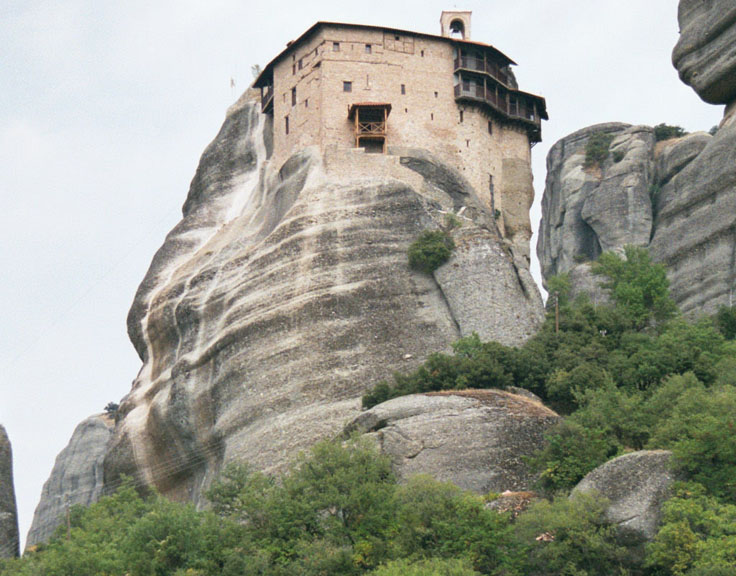
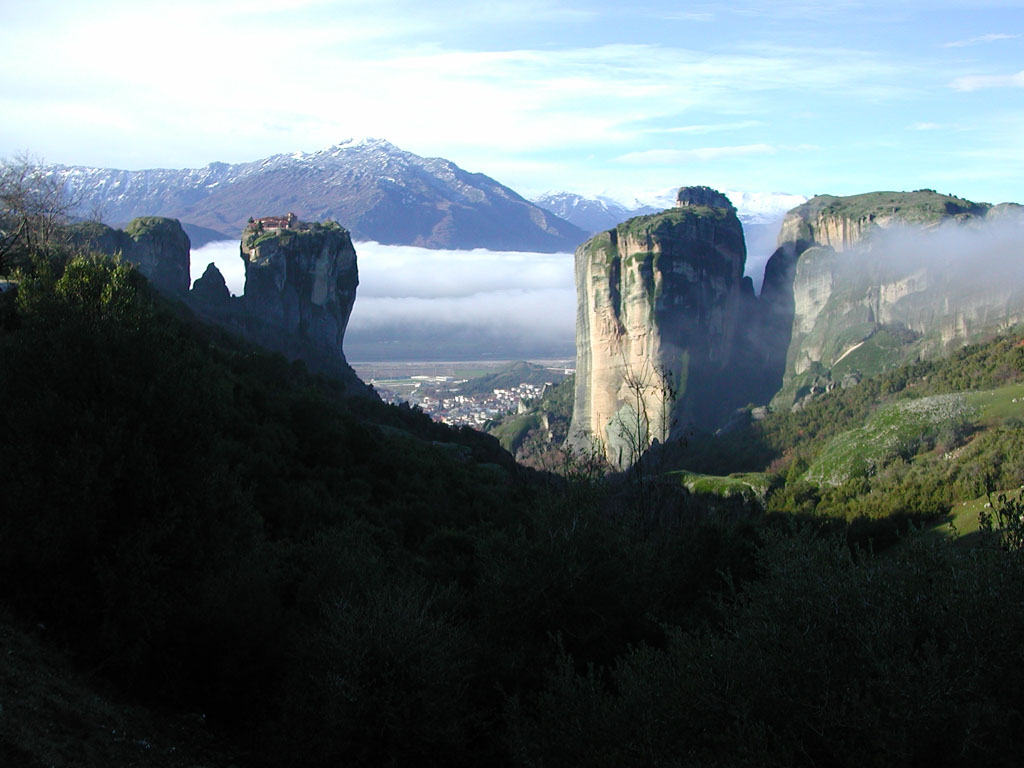
Access to the monasteries was originally (and deliberately) difficult, requiring either long ladders lashed together or large nets used to haul up both goods and people. This required quite a leap of faith – the ropes were replaced, so the story goes, only "when the Lord let them break". Until the 17th century, the primary means of conveying goods and people from these eyries was by means of baskets and ropes. In the 1920s there was an improvement in the arrangements. Steps were cut into the rock, making the complex accessible via a bridge from the nearby plateau.
During World War II the site was bombed and many art treasures were stolen. Only six of the monasteries remain today. Of these six, four were inhabited by men, and two by women. Each monastery has fewer than 10 inhabitants. The monasteries are now tourist attractions.
Kalambaka

Every year, millions of visitors come from all over the world in order to admire and honour them. If it's needed, they stay at Kalampaka and Kastraki. Kalampaka is a city of rich history and important monuments. The one of the greatest importance is the Holy Church of the Assumption of the Virgin Mary that is at the north-eastern part of the city under the very high rock of Aea.
The city of Kalampaka is built on the feet of the Meteora and it is at the left side of the river Pinios at the point that it enters the plain of Thessaly. It is the starting place for those visitors who wish to be familiar with the monuments and the magnificent sites of Aspropotamos of Hasia, of Koziakas and especially of the Meteora.
The town is built on the location of the ancient city of Aiginion. It is attested since the 10th century, when it was known as Stagoi, a Byzantine fortress and bishopric. Of its medieval monuments, only the cathedral, the Church of the Dormition, survives. It is a late 11th/early 12th century building, built on the remains of an earlier, late antique church. The name "Kalabaka" was given 6-7 centuries ago. It is of Turkish origin and means "powerful fortress". On the 27 August 1881, Kalabaka left Ottoman rule to join the Kingdom of Greece. In 1995 an ancient tomb was found in Kalabaka dating from the 20th century BC.
The city of Kalampaka is the capital of the homonymous province that takes up the north-western part of the prefecture of Trikala. There, one can find nice hotels, modern campings, restaurants, tourist shops etc.
No need to look for rent a car though... You have already found the best! Book your car now. We will deliver it for you at the airport to save you trouble!
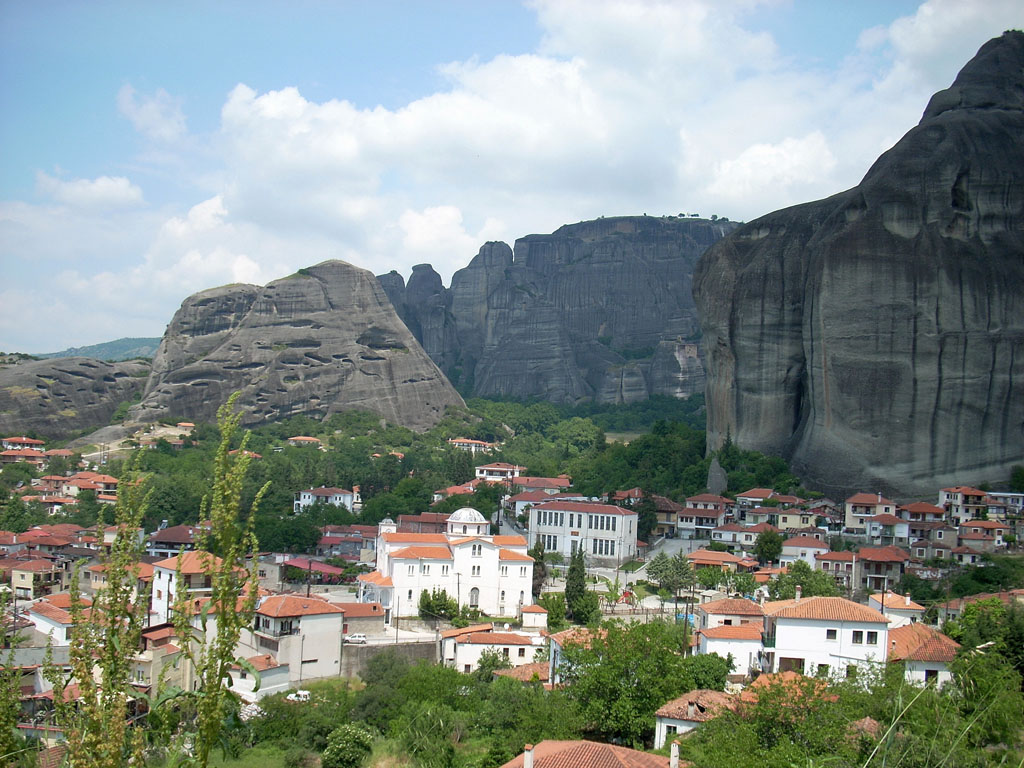
Monasteries of Meteora
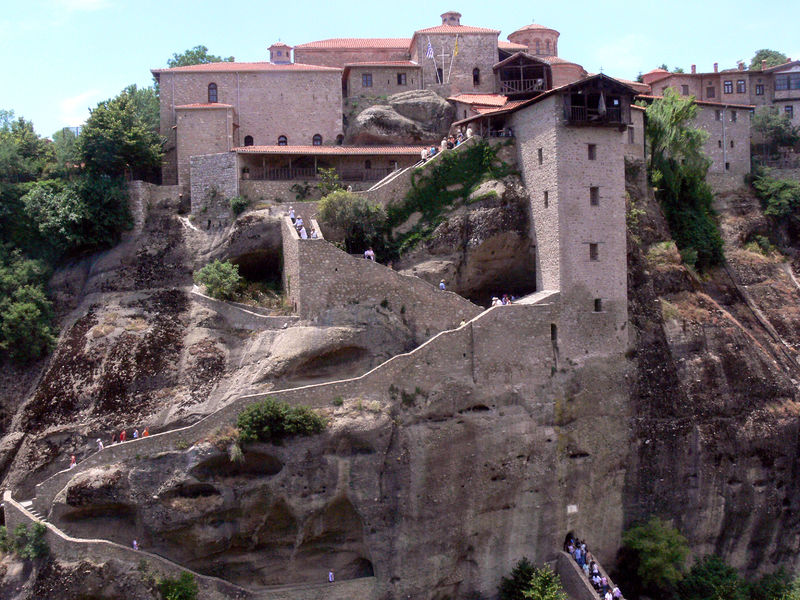
The Holy Monastery of Great Meteoron
This is the largest of the monasteries located at Metéora. It was erected in the mid-14th century AD and was the subject of restoration and embellishment projects in 1483 and 1552. The building serves as the main museum for tourists. The Katholikon (main church), consecrated in honour of the Transfiguration of Jesus was erected in the middle of 14th c. and 1387/88 and decorated in 1483 and 1552.

The Holy Monastery of Varlaam
The Holy Monastery of Varlaam is the second largest monastery in the Metéora complex. It was built in 1541 and embellished in 1548. A church, dedicated to All Saints, is in the Athonite type (cross-in-square with dome and choirs), with spacious esonarthex (lite) is surrounded by a dome. It was built in 1541/42 and decorated in 1548, while the esonarthex was decorated in 1566. The old refectory is used as a museum while north of the church is the parekklesion of the Three Bishops, built in 1627 and decorated in 1637.
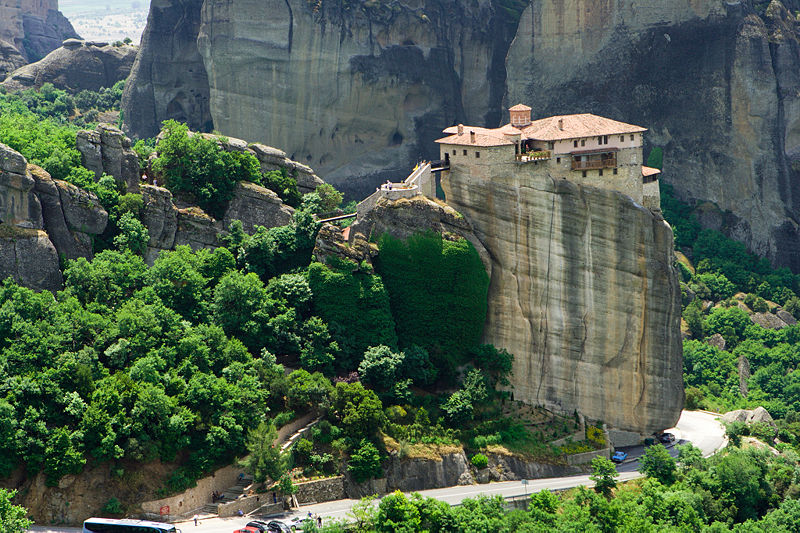
The Holy Monastery of Rousanou/St. Barbara
The Holy Monastery of Rousanou/St. Barbara was founded in the middle of 16th century AD and decorated in 1560.
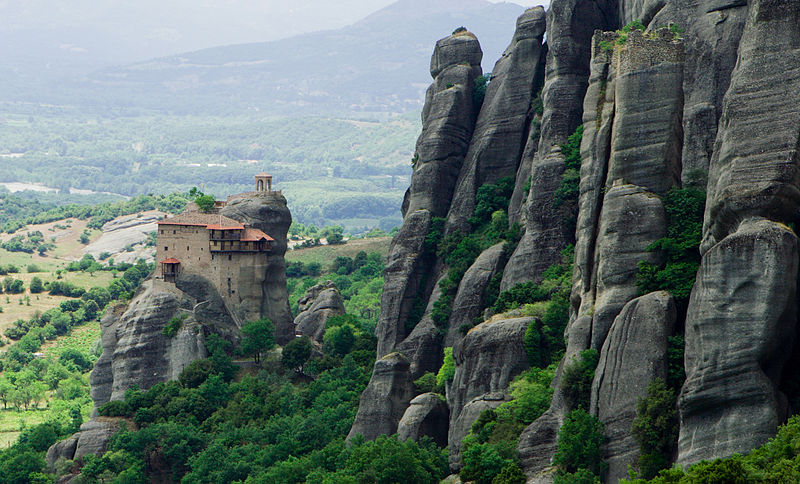
The Holy Monastery of St. Nicholas Anapausas
The Holy Monastery of St. Nicholas Anapausas built in the 16th century AD, is a small church. It was decorated by the Cretan painter Theophanis Strelitzas, in 1527.
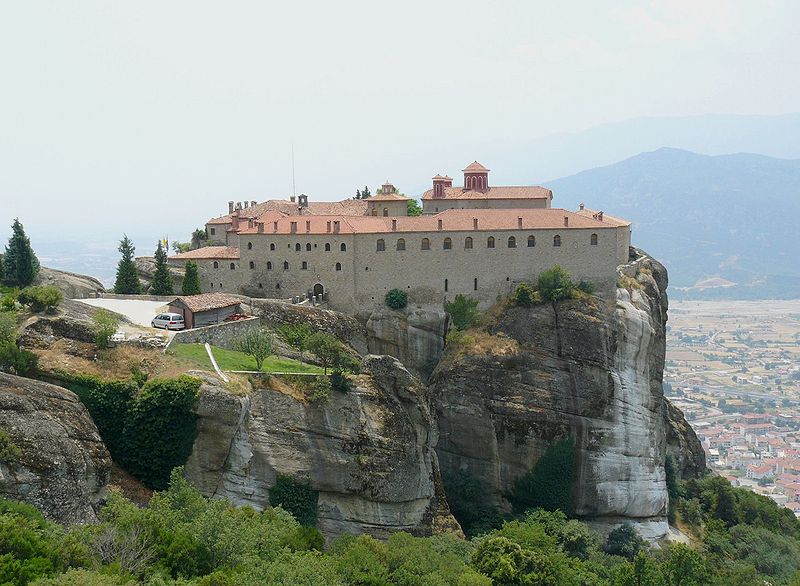
The Holy Monastery of St. Stephen
The Holy Monastery of St. Stephen is a small church built in the 16th century and decorated in 1545. This monastery rests on the plain rather than on a cliff. It was damaged by the Nazis during WWII who believed it was harboring insurgents and was abandoned. Nuns took it over and reconstructed it.
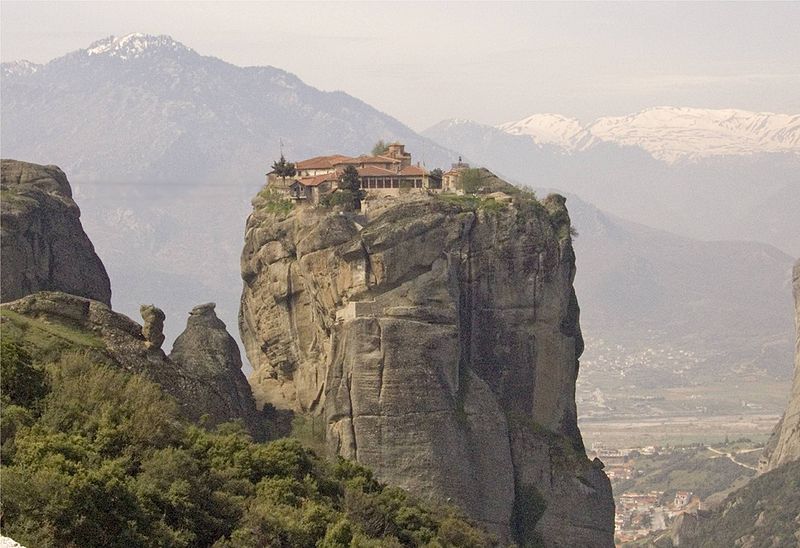
The Monastery of the Holy Trinity
The Monastery of the Holy Trinity is on top of the cliffs. It was built in 1475 and was remodeled many times in 1684, 1689, 1692, 1741.
Activities
With so many options for activities you will never wonder what else to do in Meteora.
Canoe – Kayak – Rafting
You can try canoe rafting kayak along the area of Tria Potamia till Sant Paraskevi (Bridge Alexiou). The river Axeloos is the perfect one for activities like them. There is a modern organized center (Tria Potamia) that offers to visitors the safety and the essential training that is necessary for these sports. You can stay in the area of Aspropotamos and close to villages Krania, Kalliroi, Polithea.
Mountain Cycling
There are plenty of different, interesting routes that are easy to follow, on the mountain Koziaka and around the area of Kalambaka.
Horse Riding
The Pertouliotika Meadows is the perfect place for horse riding. The organized Magic Sport offers to you the opportunity of safety and training. There is variety of rooms and hotels in close villages, that you can stay. You can also visit the riding centers that are in villages Lazarina and Kastania.
Hiking – Mountaineering
There are plenty of different, interesting walks that are easy to follow. Mountain Koziakas is a paradise for those who love hiking and mountaineering with plenty beautiful routes and paths that ending in the top of neightbouring mountains, but without the necessary signs. There are hotels, rooms and shelters available in the area to spend the nights.
Winter Sport
At the ski center of Pertouli the lovers of the snow can have fun with every kind of snow activity, like: alpine ski – mountaineering ski – cross country ski, snowboard, sledges and snowmobiles.
Cave of Theopetra
About 5 kilometers from the city of Kalambaka, there is the rock of Theopetra. At north-eastern side of the rock there is the Cave, which you can visit. Is a place with archaeological importance? The excavations are till continued. In the Cave have been found ceramic objects, bones, and the most amazing two human skeletons, the one is 8.500 years old and the other is 15.000 years old. At the rock of Theopetra there are sport climbing sectors, with variety of routes.
Enduro – 4X4
Trikala mainland with its major geographical regions, is an ideal city for Enduro motor cycling adventures. It offers something for everybody from beginners to experts with many challenging off-road terrain.
Lake – Plastira
In the borders of Trikala and Karditsa is situated the Lake of Plastira, an organized region with tourist and athletic interesting. The visitor can try riding, sport of humid element, even alpine ski, cross country ski the wintry months in the ski Center Voutsikaki.